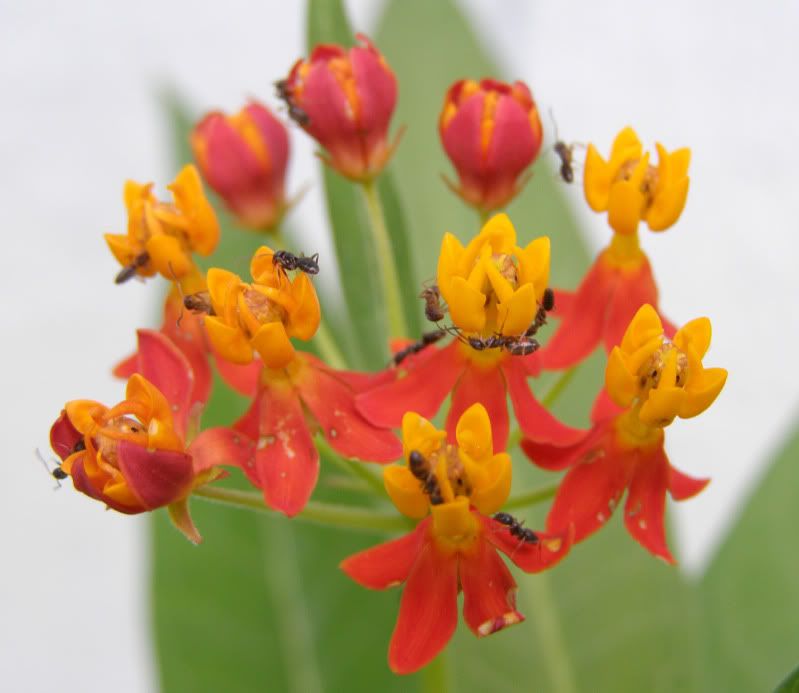
Tapinoma sessile, The Odorous House Ant, is the only ant I know of that steals nectar from Milkweed. What you're looking at up there is probably the best example of this. Usually I only see one or two ants working a cluster. What's odd is that I don't see other ants doing it. Lasius neoniger, Lasius alienus, Formica incerta, Tetramorium species E, and colonies of Temnothorax curvispinosus, as well a few others are all ants nesting next to this plant. There's even a massive colony of Crematogaster cerasi around. All of these colonies are nesting withing foraging distance if not directly in the garden they're planted in.
The Formica incerta is understandable because they're slightly bigger. Tetramorium I've seen working aphids and sipping at extra floral nectar, though their main diet is insects and seeds. But the Lasius are the same size and eat more sugars, why aren't they working this plant?

Stealing nectar isn't exactly necessary or beneficial to the plant in this case. Actually many plants have hairy stems to prevent it from happening. The nectar is there to attract pollinators. Pollen is dusted onto the bee, wasp, beetle, or what have you, and is hopefully moved to other flowers. Some bees happily store pollen in the nest as it's an excellent food for developing bees. Ants don't seem to take advantage of pollen sources, at least not that I'm aware of. Some ant species do pollinate plants but usually they're hairy or have special structures on their body to do this. Tapinoma sessile is not that hairy though as far as ants go.